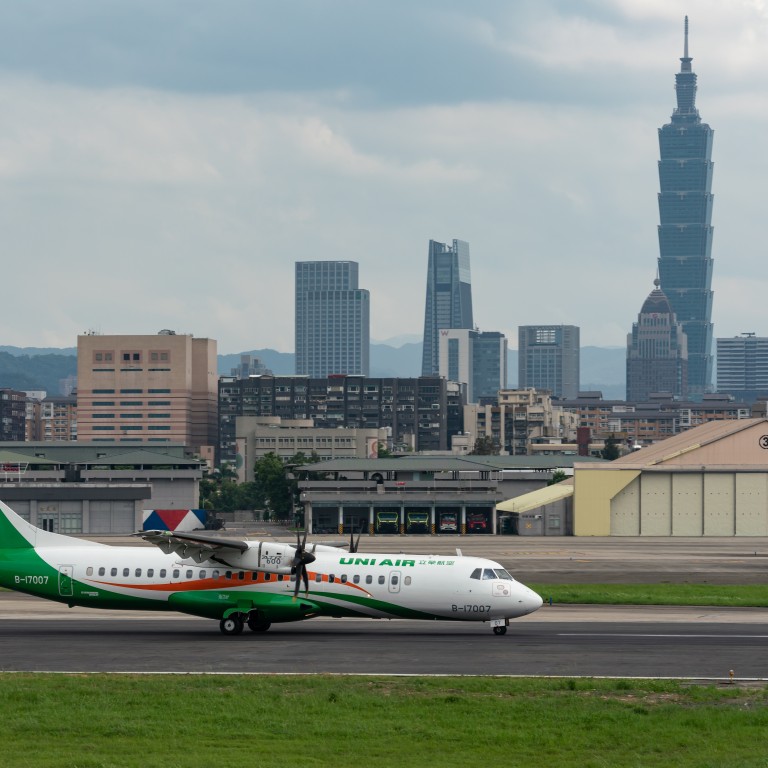
South China Sea missile drills to blame for Taiwanese plane being turned back at Hong Kong, source says
- ‘Dangerous activities’ cited by city’s civil aviation department as reason for blocking UNI Air flight last week was actually a PLA air-to-air missile exercise, insider says
- Taiwanese aircraft was unable to climb to a safe enough height to be allowed entry into Hong Kong airspace, he says
“Most passenger airliners fly above 26,000 feet,” said the source, who asked not to be identified because of the sensitivity of the matter. “But the Taiwanese aircraft was a propeller-powered ATR 72 that can’t climb that high.”
According to aircraft websites, the ATR 72 has a maximum altitude of 25,000 feet.
According to Yen, there were no military activities taking place in the area and China’s maritime safety agency had not issued any warnings.
“We hope that Chinese authorities will abide by the international aviation regulations and place importance on safety,” he said.
US to expand arms sales to ‘like-minded nations’ to counter China, Russia
Hong Kong’s Civil Aviation Department had earlier rejected the suggestion it deliberately impeded the flight and said its staff were following “established practices and procedures”.
It said it notified Taiwan’s air traffic control centre of “the minimum safe altitude to be observed for flights” and that the centre indicated it would “cancel the request” for the flight to enter Hong Kong’s airspace.
The incident came amid an increase in military exercises by the PLA in disputed regional waters as well as in the skies close to Taiwan’s airspace. Beijing regards the self-ruled island as part of its territory and has never rejected the use of force to reunify it.
“This would never have happened if the Taiwanese military had chartered a more advanced aircraft, like a C-130 transport plane, that could fly higher,” the source said, though he added there appeared to have been a breakdown in communication on both sides.
Hong Kong’s civil aviation authority said on Wednesday it had nothing further to say on the matter.
Additional reporting from Jeffie Lam

